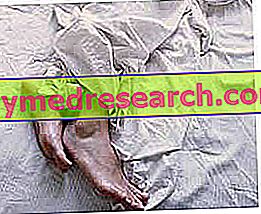Definition
Disodontiasis is a disorder due to the difficulty of a tooth eruption.
The condition is associated with continuous and dull pain in the dental arches during the age of the development of the jaw and jaw; this manifestation derives from the inflammation of the tissues that are around the dental element and support it.
In most cases, the disodontiasis is caused by the incorrect orientation of the tooth (ie in the case in which this is oblique and does not have the possibility to escape vertically, therefore it remains included) or from the lack of useful space on the dental arch for the eruption thereof. Furthermore, it is possible to observe a tooth element popped regularly, but surrounded by soft tissues that are scarcely reabsorbed; in this case, the gingival sulcus shows an abnormal morphology, the gingiva reaches the chewing surface of the tooth and a sort of "pocket" is formed in which bacterial plaque and food residues are collected.
Disodontiasis most frequently affects the lower eighth (wisdom tooth), but the canine or the last upper molar may also be involved. Even milk teeth may be affected by this condition. Dysodontiasis may be favored by alterations in the normal development of the maxilla and mandible.
The anomalous eruption of the tooth can predispose to infectious complications, such as the formation of a collection of pus (abscess or fistula) and the propagation of the inflammatory process also to the neighboring areas, to the bone or to the entire oral cavity.
In the most serious cases, a trismus can appear, that is a spastic contraction of the muscles of the jaw that causes difficulty in opening the mouth.
Dysodontiasis is often accompanied by fever, headache and problems with swallowing.
Depending on the situation, the dentist can evaluate the extraction of the dental element or the surgical removal of the tissues surrounding or covering the crown. Before this operation, therapy with antibiotics and analgesics may be indicated.

Possible Causes * of Disodontiasis
- Spherocytosis



